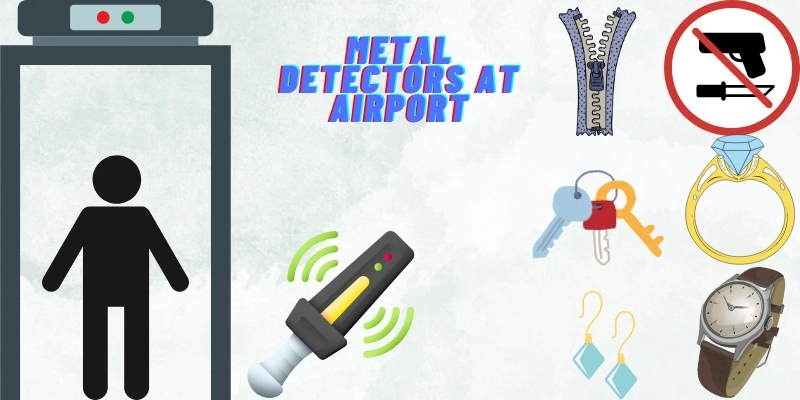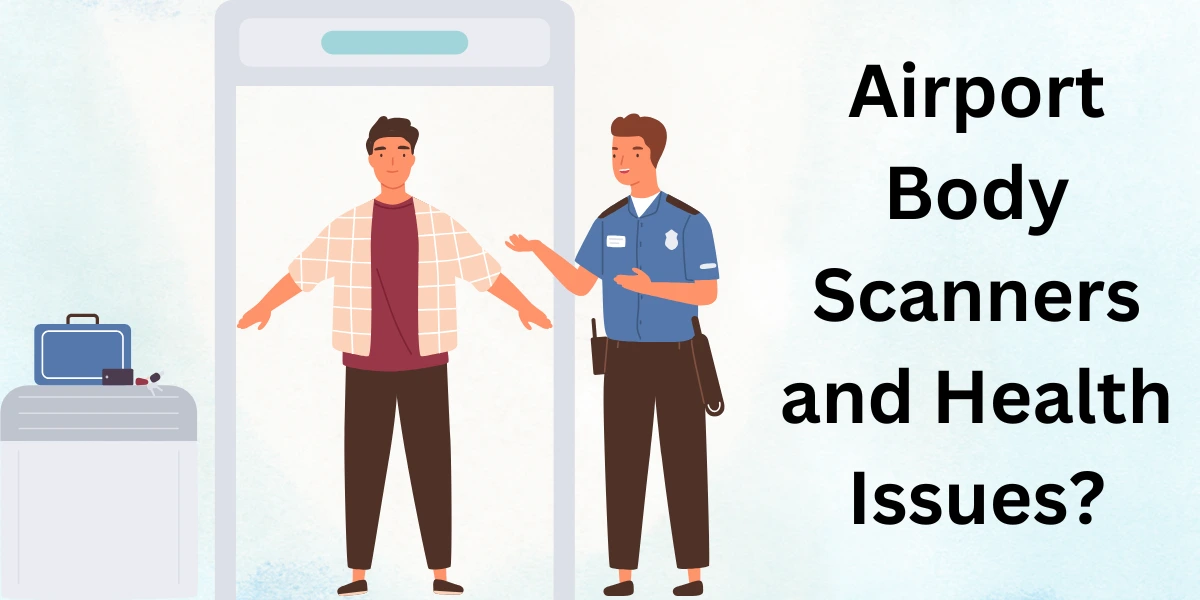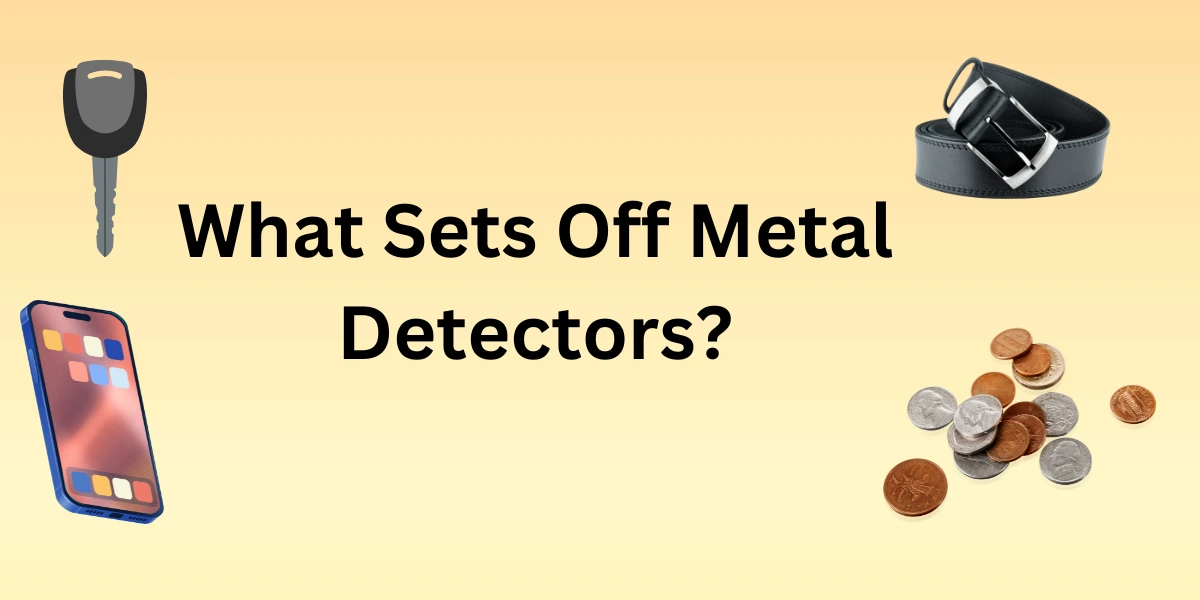What Can Walk-Through Metal Detectors Detect?
Published: 8 Oct 2024
Has the sound of that beep when you are passing through a tall metal frame at the airport, school, or government building ever reached your ears? That’s a walk-through metal detector at work! Such machines are a dime a dozen these days, and they are vigilant to protect us by checking us for concealed metallic items.

This article explains in detail the types of objects and materials walk-through metal detectors can identify, from everyday items to potential security threats.
Basic Working Procedure
So, how do they work? Well, it is actually quite interesting that is why I wanted to share it with you. As soon as you enter the contained area, the detector surrounds you with an electromagnetic field. This field, where you are standing, becomes disrupted if you have any metal item like a weapon, knife, keys, a phone, etc and it triggers the detectors that produce a little beep sound.
What Do Walk-through Metal Detectors Detect?
Here is a detailed look at what walk-through metal detectors can detect:
1. Weapons
The basic purpose of Walk-through metal detectors at airports is to detect weapons, including:
Guns
Metal detectors detect weapons. As most firearms contain significant amounts of metal that make them easily detectable by walk-through scanners. Even small components like bullets, triggers, and firing pins can trigger alarms.
Knives
Moreover, bladed weapons, such as knives, swords, and daggers, are made of metal and are quickly detected by these metal detectors.
Metallic Explosive Devices
Similarly, metal detectors also detect metallic explosive devices. Such bombs or components of explosives contain metal parts (wires, casings, or triggering devices), which disturb the electromagnetic fields and are detected by scanners.
2. Contraband and Prohibited Items
The second most important function of Walk-through detectors is to identify contraband and prohibited Items that could pose a security risk, such as:
Tools and Sharp Objects
Some sharp items like screwdrivers, wrenches, or box cutters, which can be used as weapons, are easily picked up by metal detectors.
Metallic Contraband Items
Moreover, some illegal substances or smuggled goods can be hidden in metal containers or involve metal, triggering the detectors.
3. Personal Items
Almost every traveler has experienced it when he passes through walk-through metal detectors having personal items, the detectors beep. Although these items are usually harmless, they may still trigger alarms, requiring further inspection:
- Keys: Metal keys, keyrings, and car keys can set off the alarm.
- Phones and Electronics: Mobile phones, tablets, and laptops contain metal components that can be detected.
- Coins: Loose changes made of copper, nickel, or other metals will often trigger the detector.
- Jewelry: Watches, necklaces, rings, and bracelets made of metal will be detected. Depending on the size and amount of metal, these items can lead to additional screening.
- Belts and Buckles: Belts with metal buckles or studs are commonly flagged during scans.
4. Metal Implants and Medical Devices
Walk-through metal detectors can also detect medical implants or devices, such as:
- Hip and Knee Replacements: Metal implants used in surgeries can set off metal detectors due to the metal content in prosthetics.
- Pacemakers and Defibrillators: These medical devices contain metal components that can be detected.
- Dental Implants or Braces: Depending on the material used, some dental work may cause a reaction in a metal detector.
5. Jewelry and Accessories
While often harmless, large pieces of metal jewelry or metallic accessories may also trigger the alarm in walk-through metal detectors:
- Metal Chains: Heavy necklaces or chains may alert the detector.
- Belt Buckles: Large metallic belt buckles are a common source of false alarms, though they do not pose a security threat.
- Piercings: Body piercings, especially larger ones made of metal, can trigger the alarm.
6. Miscellaneous Objects
Other miscellaneous metal objects that can be detected include:
- Eyeglass Frames: Metal-framed glasses can sometimes be detected by walk-through metal detectors, although the amount of metal may not always trigger an alarm.
- Pens and Pen Clips: Metal pens, especially those with metal clips, are small but detectable.
What Walk-Through Metal Detectors May Not Detect
Walk-through metal detectors are highly effective at finding a wide range of metal objects, but they have limitations when it comes to detecting certain materials or small metal items. Here’s a list of things that walk-through metal detectors may not detect:
- Non-Metallic Items: Objects made of plastic, ceramic, wood, or glass, unless they have metal components, will not be detected.
- Low Conductivity Metals: Metals like stainless steel or titanium have low magnetic permeability, making them harder to detect, especially if they are small or thin.
- Non-Magnetic Metals: Metals like aluminum or copper may not trigger detectors as easily as ferrous (iron-containing) metals, depending on the detector’s sensitivity.
- Small Metallic Items: Tiny metal objects, such as small screws or pins, may go undetected if they don’t generate a strong enough signal.
- Embedded Medical Devices: Certain implanted medical devices like non-metallic pacemakers or titanium joint replacements may not be detected.
- Minimal Metal in Clothing: Small amounts of metal woven into clothing, such as in some fashion accessories or metal fibers, may be too minimal to trigger an alarm.
- Non-Metallic Explosives: Detectors can’t identify explosives or dangerous substances made entirely from non-metallic materials.
- Liquid-Filled Containers: Metal detectors won’t detect liquids like water or other non-metallic substances, even in metal containers if they’re very small.
Final words
Walk-through metal detectors are highly effective at detecting a variety of metallic objects, particularly weapons, tools, and contraband, as well as everyday items like keys and phones. Their ability to identify metal makes them crucial for maintaining security in high-risk areas such as airports, schools, and public events.

- Be Respectful
- Stay Relevant
- Stay Positive
- True Feedback
- Encourage Discussion
- Avoid Spamming
- No Fake News
- Don't Copy-Paste
- No Personal Attacks

- Be Respectful
- Stay Relevant
- Stay Positive
- True Feedback
- Encourage Discussion
- Avoid Spamming
- No Fake News
- Don't Copy-Paste
- No Personal Attacks





